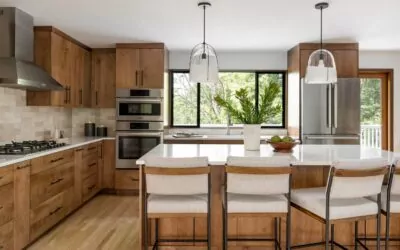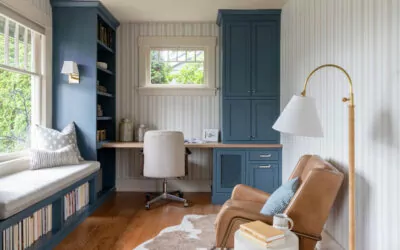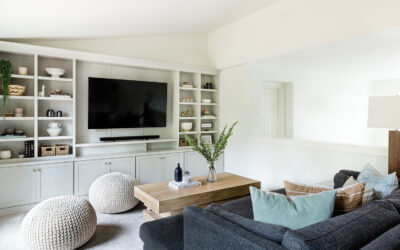Lately my mind has been on what I’ve been calling Holistic Interior Design. What does it look like to design a home with the whole person in mind? What does it look like to not only focus on the practical physical needs our clients have but also their mental, emotional, and spiritual needs? Our homes, unlike any other space we encounter, have the ability to offer us something most other spaces can’t, and that’s a deep sense of rest and safety. A place to truly recharge before we launch out into the world each day. What does the design of our homes look like when we are intentionally designing with this in mind? I think the answer lies in a home that has been thoughtfully designed to support us fully in all of what makes us human.
Since the COVID pandemic many of us have been working from home. While some have returned to the office, it’s often not a full five days a week meaning we are all spending more time in our homes than ever before. And did you know that the average adult spends 90% of their time indoors? As a result, wellness is becoming an increasingly important factor in residential interior design, as more and more people realize the impact that their living environment has on their overall health and happiness. As a designer, I am increasingly interested in how we can design spaces that support our clients’ wellbeing.

But in order to understand how to design with wellbeing in mind, first we have to understand what contributes to our wellbeing. In a Barna Group research study I recently read the following:
“Stability, peace, calm – we long for places to find or experience these emotions – to feel, as McClay expresses, “grounded in and oriented toward something.” Nature is a prominent place people feel this connection.”
It goes on further to say that 70% of US adults feel some sense of transcendence or spiritual connection in nature. There is something incredibly calming and peace giving about nature. There are also healing qualities of nature. The National Library of Medicine published a study in October 2021 that stated:
“Window views of nature have shown a strong relationship with shorter length of stay, reduced perception of pain, relaxation and positive emotions, and patient satisfaction with their view. A study of ICU patients concluded that patients with views of nature had a reduced length of stay compared to patients with urban views. A study of surgical patients found that those with a window view of trees had fewer negative comments from nurses during evaluation, took fewer doses of pain medications, and showed lower scores for minor postsurgical complications.”

So there is a strong connection to nature and our well being. But what does this mean for our homes? It means that the more connected we are to nature in the design of our homes, the better it is for our well being – physically and mentally. Practically this might look like incorporating more windows to increase natural light in your home and connect with the natural landscape around you. Natural light is not only beautiful but it can also have a positive impact on our mood and energy levels. It can also mean choosing natural materials for your home’s construction such as natural stone countertops, lambs wool insulation, and solid wood cabinetry to name a few. Using natural materials can help minimize the number of indoor air toxins or pollutants, making them a healthier choice for you and your family. A more simple way you can also help boost your indoor air quality and feel connected to nature is by adding a few plants. Not only do plants add a touch of greenery and bring a bit of nature into your home, but they also have air purifying qualities and can help improve indoor air quality. Generally speaking, if something is good for the environment, it’s also good for us.
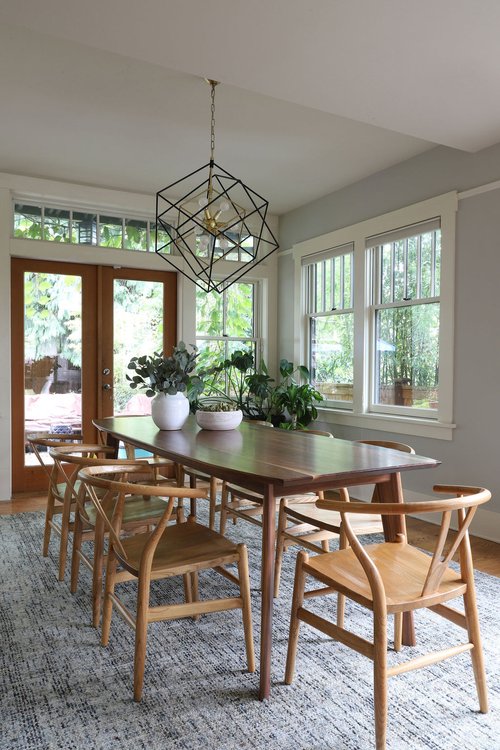
Plenty of plants and natural light add to the warmth and holistic design of this home
And when you find there is not a completely natural option available, more and more you will find there are better alternatives to traditional toxic products. No-VOC paint is one such example. VOC stands for volatile organic compounds. Fun stuff, huh? The good news is paint companies like Benjamin Moore have been offering low and no-VOC paint products for years now and over time other paint manufacturers have also caught on. If our clients aren’t quite ready to jump fully into the sustainability pool for their home, the one thing we try and encourage everyone to do, is to use a no-VOC paint. Because paint covers so much surface area in your home, it is a nominal upgrade that can make a big difference to the overall indoor air quality.
Another example is if you can’t find a cabinet shop that will use solid wood for your cabinets, find one that will at least use formaldehyde free plywood in its cabinet boxes. Again, this simple switch can save you from hazardous toxins polluting your indoor air.
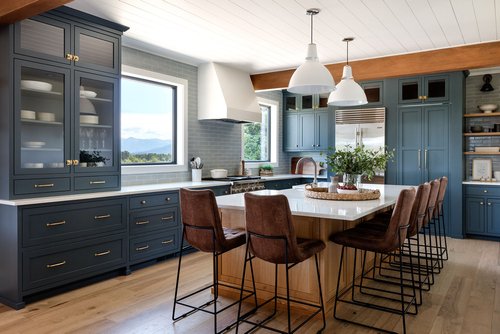
Research also shows that the benefits of clean indoor air quality are not just physiological. In a blog post by the White House’s Office of Sciences and Technology Policy entitled Clean Indoor Air Benefits For Everyone they noted:
“Cleaner indoor air improves cognition and productivity, reduces the spread of other airborne diseases, protects against outdoor air pollutants such as smog and wildfire smoke, and decreases the number of environmental triggers for conditions like asthma and allergies.”
When our immune systems are not busy with protecting us from toxins, more energy is freed up to help us boost our mental cognition and focus. How cool is that? Additionally, scientific research continues to show that our physical and mental health are strongly linked. Many studies have been done on athletes showing a link between physical injuries and depression. And one might think, sure they’re depressed because they temporarily can’t play the game they love, but research suggests it goes deeper than that. What they have found is that our bodies actually sink into a depressive state to promote healing as we are often less active when we have feelings of depression. What’s even more interesting is that new research shows that our bodies can do the same thing even when a physical injury is not present but a mental or emotional “injury” such as stress, anxiety, grief, or burnout is. Simply put, when we are in overdrive, our bodies kick in to try and help us slow down so we can heal and re-balance.
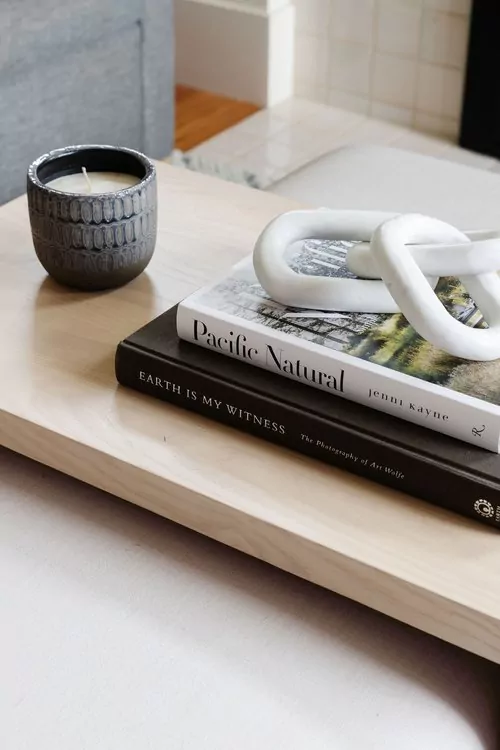
The things the body does all on its own to help us survive are pretty astounding to me. And when I think about my clients I want to design homes for them that not only help them survive, but help them thrive. Good design partners with what the body already knows to do and promotes mental, emotional, and spiritual well being. Oftentimes, if you have those three in balance, physical health is a byproduct. So when it comes to our clients’ homes we are thinking about how we can design in such a way that supports them holistically. To get at the heart of this some questions we ask our clients include:
- Do you have any daily rituals or habits that include meditation, prayer, reading, or journaling?
- Do you currently have a dedicated space in your home for those activities?
- Do you have or need a space in your home for exercising?
- Is your kitchen designed and organized in a way that makes meal prep easy and enjoyable?
- Is your bedroom designed in a way that promotes a good night’s sleep?
- Is your home well organized or does it need better organizational systems? As a side note – oftentimes physical clutter not only takes up physical space, but also a great deal of mental space and energy, so we’ve found a well organized home also helps promote overall mental wellbeing.
- Does the way your space is designed promote what matters most to you? An example would be if a client has told us time to connect as a family around meals is a priority, we would design the dining room so that a TV is not visible or present.
- If the design of your home could create greater life satisfaction for you and your family, what would that look like?
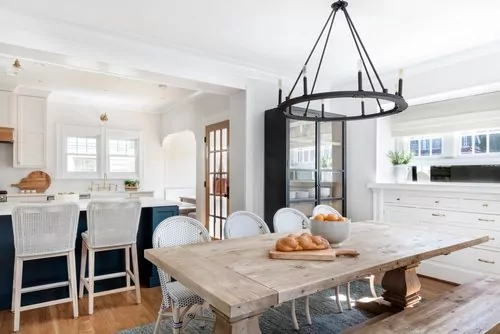
It is in the asking of these questions (and many others) that we get at the heart of who our clients are and what they most want not just out of their home, but also their life. When we have a fuller understanding of who they are and what makes them come alive, we can better design spaces that support them in their daily lives. And at the end of the day, that’s what makes us come alive!

